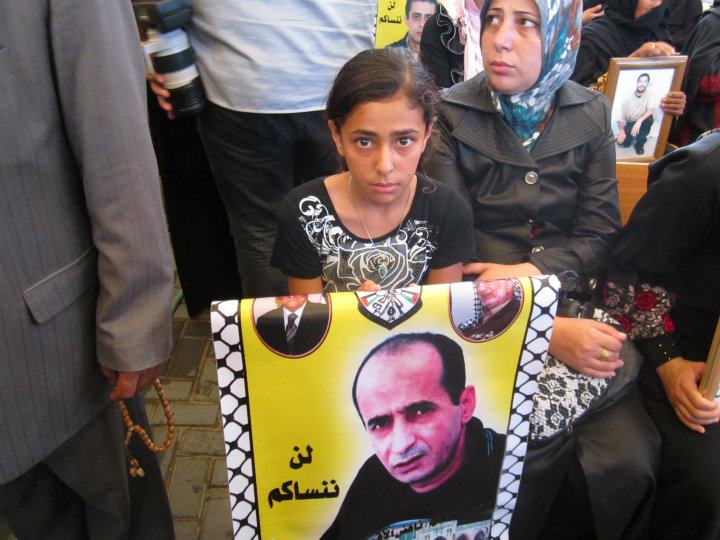-
Hebron in solidarity with prisoners on hunger strike for rights
3 October 2011| International Solidarity Movement, West Bank On the sixth day of the hunger strike of Palestinian prisoners in Israeli jails, major political factions joined in Hebron and united in support for human rights for Palestinian prisoners in Israeli prisons, victims of Israeli collective punishment tactics. On Tuesday the 27th of September, an open-ended […]
-
Nablus joins West Bank and Gaza in support of prisoner strike
by Alistair George 3 October 2011 | International Solidarity Movement, West Bank Hundreds marched in Nablus today to protest against the harsh conditions endured by Palestinian prisoners in Israeli jails and to show solidarity with over 150 prisoners currently on hunger strike. Prisoners from the leftist PFLP (Popular Front for the Liberation of Palestine) movement […]
-
Gaza protest supports Palestinian prisoners on hunger strike
3 October 2011 | International Solidarity Movement, Gaza Today over a thousand Palestinians converged on the International Committee of the Red Cross building in Gaza, Palestine, continuing a tent protest that began outside the walled compound yesterday and bolstering a weekly sit-in by the families of Palestinian detainees in Israeli prisons. These events began a […]
Action Alert An Nabi Saleh Apartheid Wall Arrests BDS Bethlehem Bil'in Cast Lead Demonstration Denial of Entry Ethnic Cleansing Farmers Gaza Global Actions Hebron House Demolition International law Israeli Army Jerusalem Live Ammunition Nablus Ni'lin Prisoner Ramallah Rubber-coated steel bullets Settlement Settlers Settler violence Tear-Gas Canister Video


